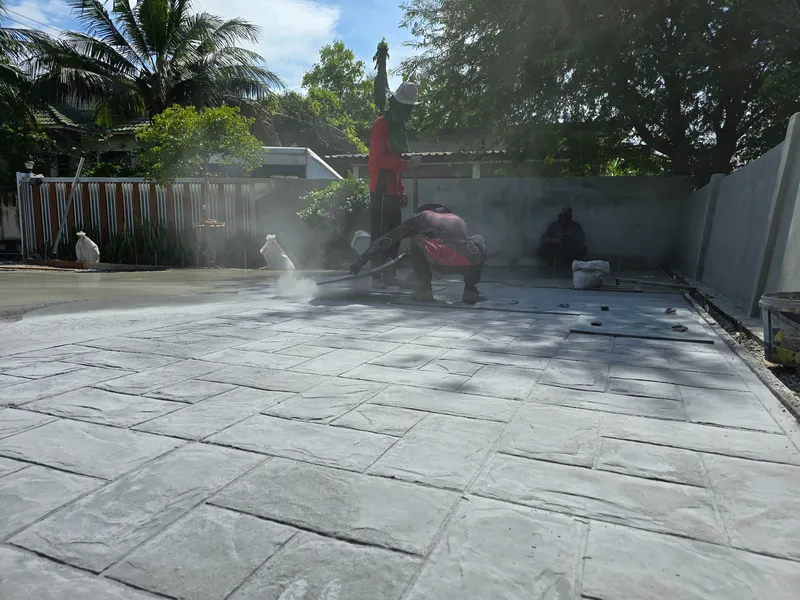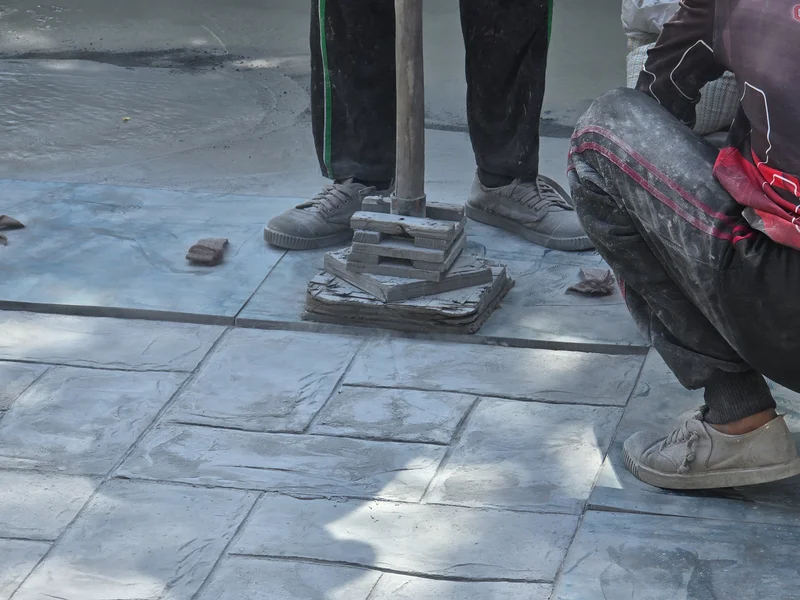A Comprehensive Look at Creating Patterns and Textures on Concrete Surfaces
The process of enhancing concrete surfaces with intricate designs and textures is growing in popularity. This method transforms plain concrete into stunning works of art that mimic the look of brick, stone, or slate. Whether it’s for patios, driveways, or walkways, using this technique can add significant aesthetic appeal and value to your property. In this guide, you will learn about the detailed steps involved in creating textured concrete surfaces, from preparation to final sealing.

Understanding the Basics of Textured Concrete
The technique begins with laying a new slab of concrete. While it’s still wet, patterns are imprinted onto its surface using special mats or stamps. These tools come in various designs and sizes to create different effects. The benefit of this process is not only visual but also functional as stamped concrete offers durability and low maintenance compared to natural materials.
Preparation: Setting the Foundation for Success
Before starting the stamping process, proper groundwork is essential. This includes cleaning the area and setting up forms to define edges. It’s crucial to pour concrete evenly to ensure consistency in texture and color. Concrete stamping requires precision at every step to achieve optimal results.

Choosing the Right Materials and Tools
Selecting suitable materials and tools is vital for success. Opt for high-quality concrete mixes designed for durability and ease of use. The choice of stamps depends on the desired pattern and finish. It’s important to have all equipment ready before beginning the project. This ensures smooth execution without unnecessary delays.
Applying Color Accents for Added Visual Appeal
Color application happens shortly after pouring the concrete. There are two main methods: integral coloring where pigments are mixed into the concrete batch, and surface-applied colors, which involve dusting pigments on top. Each method provides unique effects, allowing customization according to personal preferences.
The Stamping Stage: Bringing Designs to Life
This stage involves pressing stamps into the freshly poured concrete. Timing is critical here; if done too early, the design may not hold well, while too late can prevent proper imprinting. Using precise pressure helps maintain design integrity across the entire surface.
- Ensure uniform thickness throughout
- Use release agents to prevent tool sticking
- Align stamps correctly for continuous patterns
Sealing for Protection and Longevity
Sealing is an important final step that protects against weather damage and enhances color vibrancy. Choose a sealer compatible with your chosen color system. Regular resealing maintains appearance and extends service life. This phase completes the transformation of your concrete surface into a visually appealing feature.
Cost Considerations and Value Proposition
The cost varies based on complexity, size, and materials used. Initial investments may seem high but consider long-term benefits like minimal maintenance and added property value. This process can prove more cost-effective than installing natural stone or pavers over time.
Conclusion: Embarking on Your Decorative Concrete Journey
If you’re planning a project in Modesto, CA, I am here to assist you with expert advice and services from CB Concrete Inc. For personalized recommendations tailored to your specific needs, feel free to reach out at (925) 899-2479. Let me help transform your space with creativity and precision.